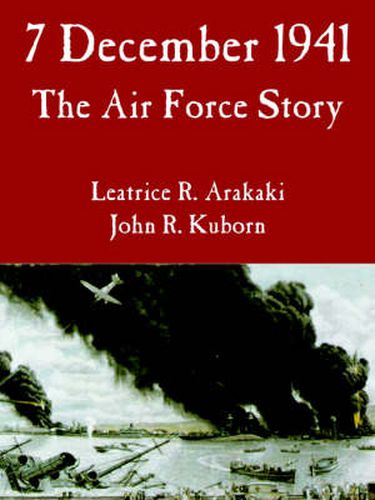Readings Newsletter
Become a Readings Member to make your shopping experience even easier.
Sign in or sign up for free!
You’re not far away from qualifying for FREE standard shipping within Australia
You’ve qualified for FREE standard shipping within Australia
The cart is loading…






This title is printed to order. This book may have been self-published. If so, we cannot guarantee the quality of the content. In the main most books will have gone through the editing process however some may not. We therefore suggest that you be aware of this before ordering this book. If in doubt check either the author or publisher’s details as we are unable to accept any returns unless they are faulty. Please contact us if you have any questions.
Literature on the 7 December 1941 Japanese attack that launched the United States into World War I1 is extensive. Japan’s primary objective that day was to cripple the US Fleet anchored at Pearl Harbor, and the Navy’s experience during the attack has been chronicled in detail. Control of the air over the island of Oahu was essential to the success of the attack, but documentation on Army Air Forces involvement has been sparse and often fragmented. Consequently, few people understand why the Hawaiian Air Force was so unprepared to accomplish its air defense mission or realize the extent of the damage and casualties it sustained on that Day of Infamy. This book is an attempt to remedy that situation, and the events and actions of the US Army Air Forces on 7 December are told in the following pages. In this writing we have attempted to answer several important questions. Why was the Imperial Japanese Navy able to devastate the Hawaiian Air Force with little to no opposition? Why was the American air arm with over 200 aircraft, including long-range bombers, six radar stations, a trained ground observer unit, and extensive antiaircraft weapons units unable to perform its primary job of protecting the fleet? Why were all available aircraft unarmed and lined up like sitting ducks on the flight line at each base? Why were the radar stations shut down at 0700 on the morning of the attack? Where was the central fighter control unit, and why was it not activated prior to the attack?
$9.00 standard shipping within Australia
FREE standard shipping within Australia for orders over $100.00
Express & International shipping calculated at checkout
This title is printed to order. This book may have been self-published. If so, we cannot guarantee the quality of the content. In the main most books will have gone through the editing process however some may not. We therefore suggest that you be aware of this before ordering this book. If in doubt check either the author or publisher’s details as we are unable to accept any returns unless they are faulty. Please contact us if you have any questions.
Literature on the 7 December 1941 Japanese attack that launched the United States into World War I1 is extensive. Japan’s primary objective that day was to cripple the US Fleet anchored at Pearl Harbor, and the Navy’s experience during the attack has been chronicled in detail. Control of the air over the island of Oahu was essential to the success of the attack, but documentation on Army Air Forces involvement has been sparse and often fragmented. Consequently, few people understand why the Hawaiian Air Force was so unprepared to accomplish its air defense mission or realize the extent of the damage and casualties it sustained on that Day of Infamy. This book is an attempt to remedy that situation, and the events and actions of the US Army Air Forces on 7 December are told in the following pages. In this writing we have attempted to answer several important questions. Why was the Imperial Japanese Navy able to devastate the Hawaiian Air Force with little to no opposition? Why was the American air arm with over 200 aircraft, including long-range bombers, six radar stations, a trained ground observer unit, and extensive antiaircraft weapons units unable to perform its primary job of protecting the fleet? Why were all available aircraft unarmed and lined up like sitting ducks on the flight line at each base? Why were the radar stations shut down at 0700 on the morning of the attack? Where was the central fighter control unit, and why was it not activated prior to the attack?